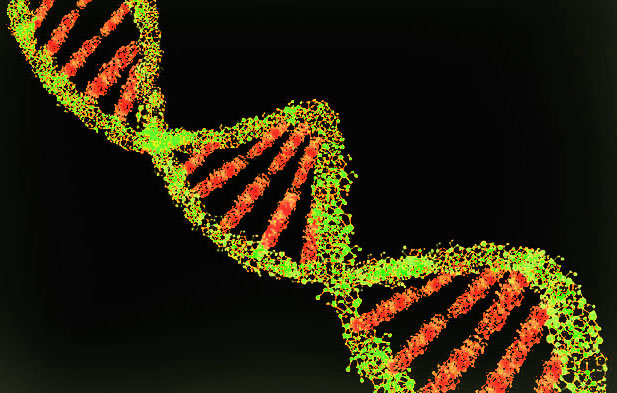In recent years, impressive progress has been made in the field of psychiatric genetics. The latest research shows how much DNA contributes to people’s predisposition, not only towards physical health conditions but also towards mental health disorders. In fact, one of the main findings is that all major psychiatric disorders show significant genetic influences.
Usually, these traits are at least 50% heritable, meaning that 50+% of the differences in a particular psychological trait between individuals can be explained by their inherited DNA differences. This is astonishing when considering that prostate cancer is about 58% heritable and breast cancer is only 30%.
In my research, I focus on depression, which has been found to be 40% heritable. But how do we get these numbers? And what can we do with this information?
When trying to establish the heritability of a specific trait we can start by looking at twins. Identical twins share 100% of their DNA, while non-identical twins – also called fraternal twins – share only 50% of DNA variation. By comparing identical and fraternal twin pairs we can see the extent to which DNA is influencing a particular trait of interest and how much is due to the twin’s unique environment.
As an example, let us say that we want to investigate the heritability of body weight. We can look at the similarity within pairs of identical and fraternal twins: if identical twins are more alike in terms of body weight in comparison to non-identical twins, then it means that genetics is playing a substantial role in determining their body weight. Additionally, if identical twins do not weigh exactly the same then this difference cannot be explained by genetics and has to be due to environmental effects not shared within the twin pair. Of course, nothing is black and white, meaning that this trait is neither 100% genetic nor 100% environmental; both of these components are important. Another approach to assess the heritability of traits is looking at children that were adopted at birth. In this case, if genetic influences are important for a specific trait then children will have increased similarity for this trait with their biological parents and siblings compared to their adoptive ones, even if they have never met with their biological family.
Once we have established that a trait is heritable – and as mentioned before, it has been shown that psychiatric traits are highly heritable – then we can start looking at the actual DNA and try to identify where these genes are. Your DNA is the same throughout your body, it does not change during your entire life and we can access it in many ways such as from saliva, blood, and even sweat!
For such a small molecule, the DNA contains a lot of information, and with today’s technologies, we are able to scan it and collect its details. But as this is still quite costly, most of the studies do not look at the whole DNA. It is as if somebody gives you a huge book, containing all the information you need in order to complete a task. Unfortunately, you have a limited amount of time and you will not get paid for any extra hour of work. So what would you do? It is crucial to prioritize, and therefore you decide to read the key paragraphs to get the essence of the book in a more efficient way. This is exactly what we are doing when looking at the DNA; we only collect information at key locations.
Next, we can compare the information in these regions of DNA between people that differ with respect to a particular trait of interest (e.g. people living with depression and people that are not living with depression). In this way we can determine how their DNA is different and where these differences are located. One limitation is that in order to grasp these DNA variants between people we need several patients with the disorder of interest - tens of thousands. Why is that? Because the traits we are interested in, such as psychiatric and psychological traits, are complex and they are not determined by a small number of genes with huge effect. On the contrary, they are influenced by thousands of bits of DNA, each of which has a very small effect. Such small effects can be detected only if we are looking at a big population. This is the reason why we need large studies, with many thousands of participants. The bigger these studies become, the more DNA differences we can discover.
Once we have identified the DNA variants associated with a trait, we can calculate a score. In fact, every little bit of DNA that we have identified will have a weight based on how strongly it is affecting the trait of interest (i.e. some DNA parts may have a lower weighting and others a higher one). This means that for each individual we can calculate a so-called ‘polygenic risk score’, which is an overall score created by adding together all of these weights for the variants each person has. As a consequence, some people will have a higher polygenic risk score for depression, meaning that they have a higher risk of developing this disorder and vice versa. Since everyone gets a score, each of us has some sort of predisposition towards depression, lower or higher. This is a new, emerging insight into psychiatry: there is not such a sharp divide between people affected by mental health disorders and those that are not. Both the polygenic risk score for a trait as well as how the trait expresses itself can be put on a continuous scale, ranging from no symptoms to the most severe cases. And this is the same for all psychiatric disorders.
What can we do with this information? Well, today there is still a gap in our knowledge, i.e. the so-called ‘missing heritability’. This is the gap between how heritable a trait is (shown in twin studies) and how much this polygenic risk score can explain. Therefore, there are probably more DNA bits associated with these traits, but we have not identified all of these yet.
There are two key strategies to move forward: to look at more people and to examine the entire genome – the whole DNA (or the entire book, word by word rather than reading only the most important paragraphs). Once we gather more information, it will be easier to predict each person’s risk of depression or any other disorder, so that we could develop new, personalized treatments and new strategies aiming to prevent people from being affected by mental health conditions in the first place.
It is an exciting time for this field of research, which is leading us towards a better understanding of ourselves.












